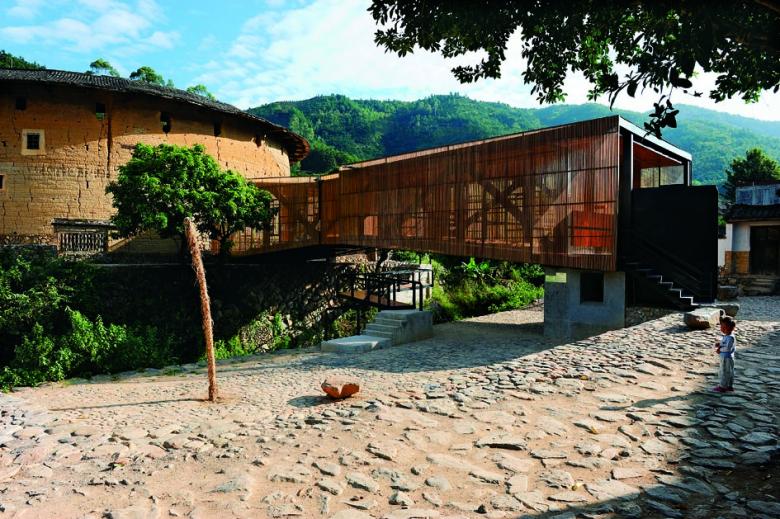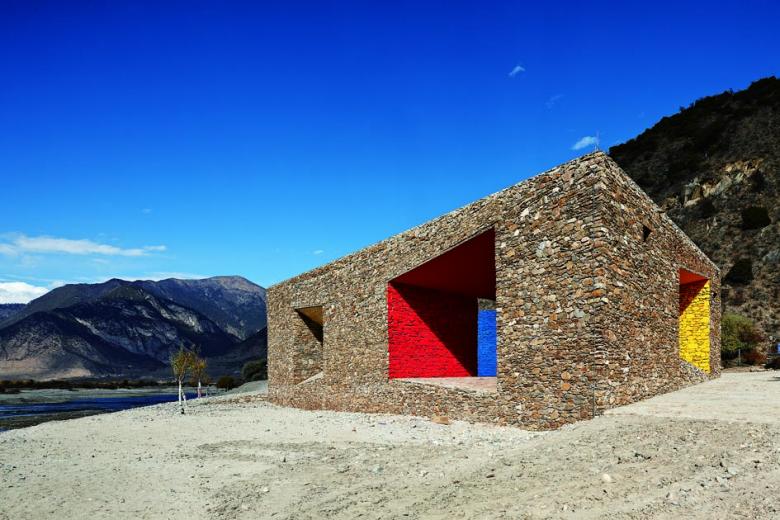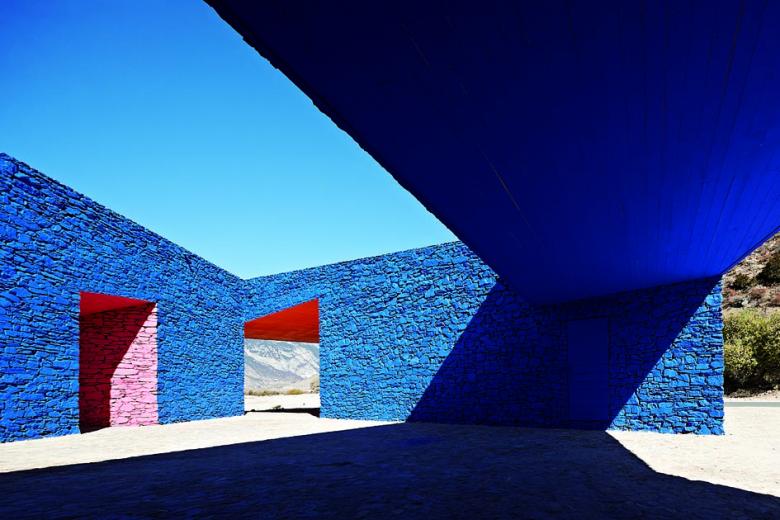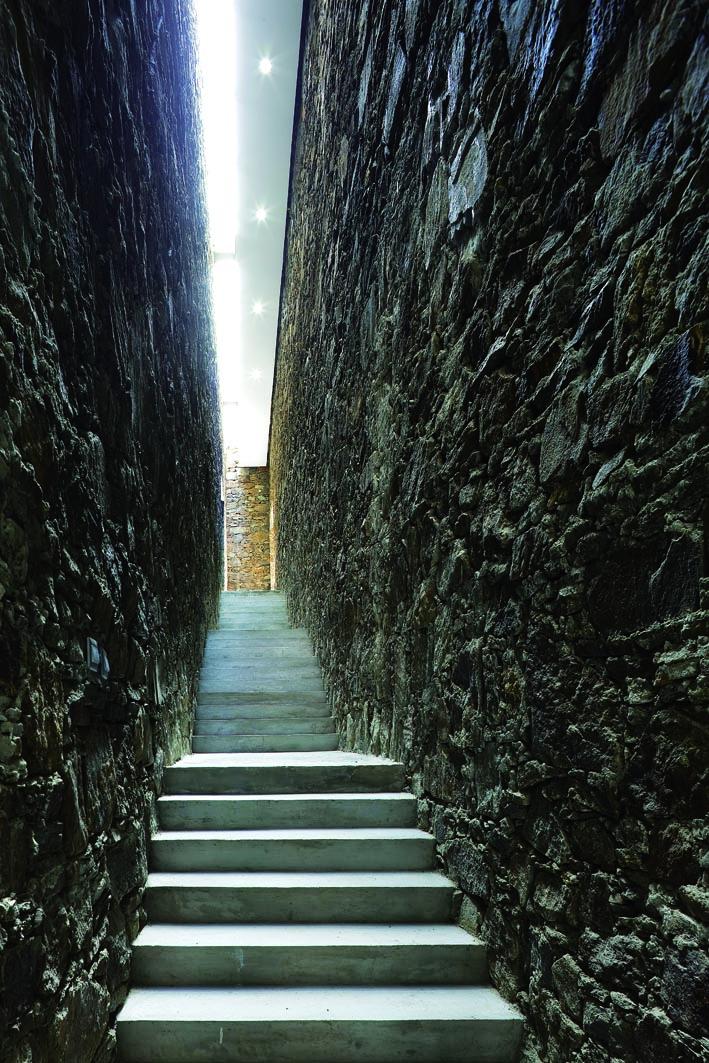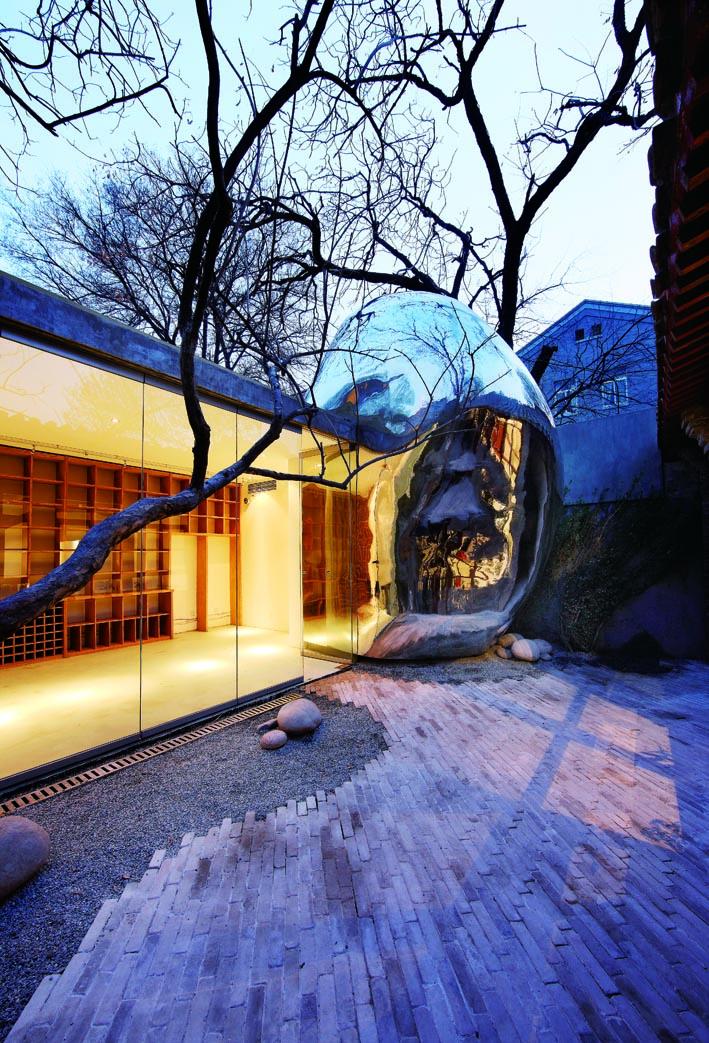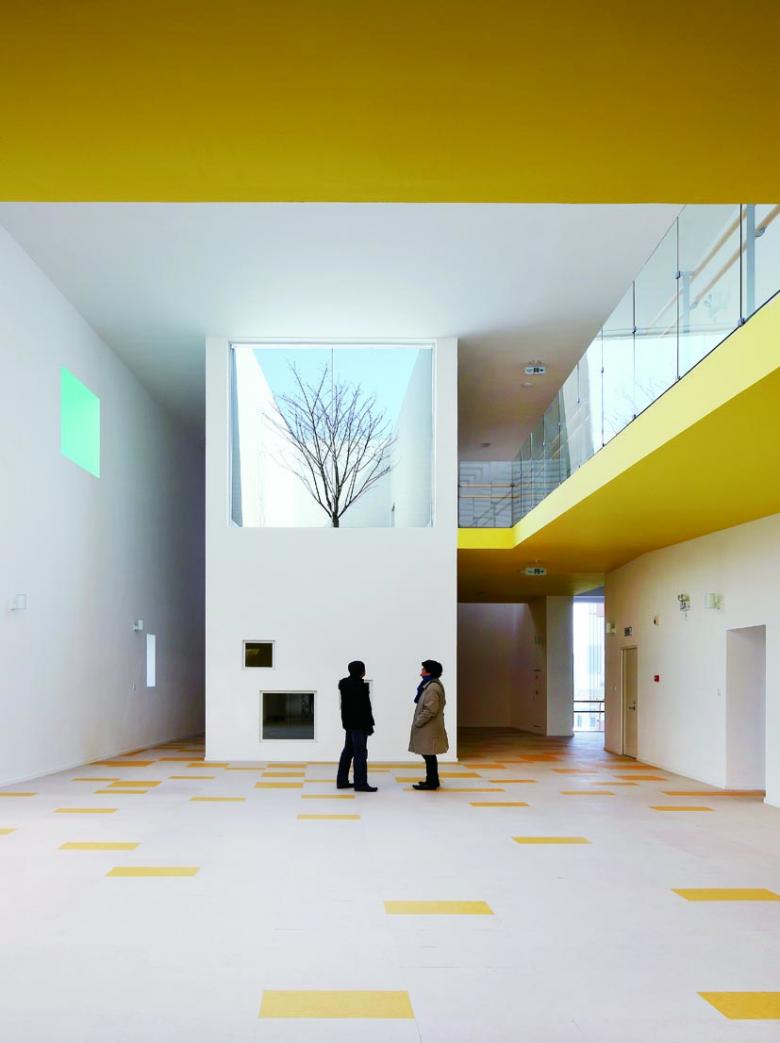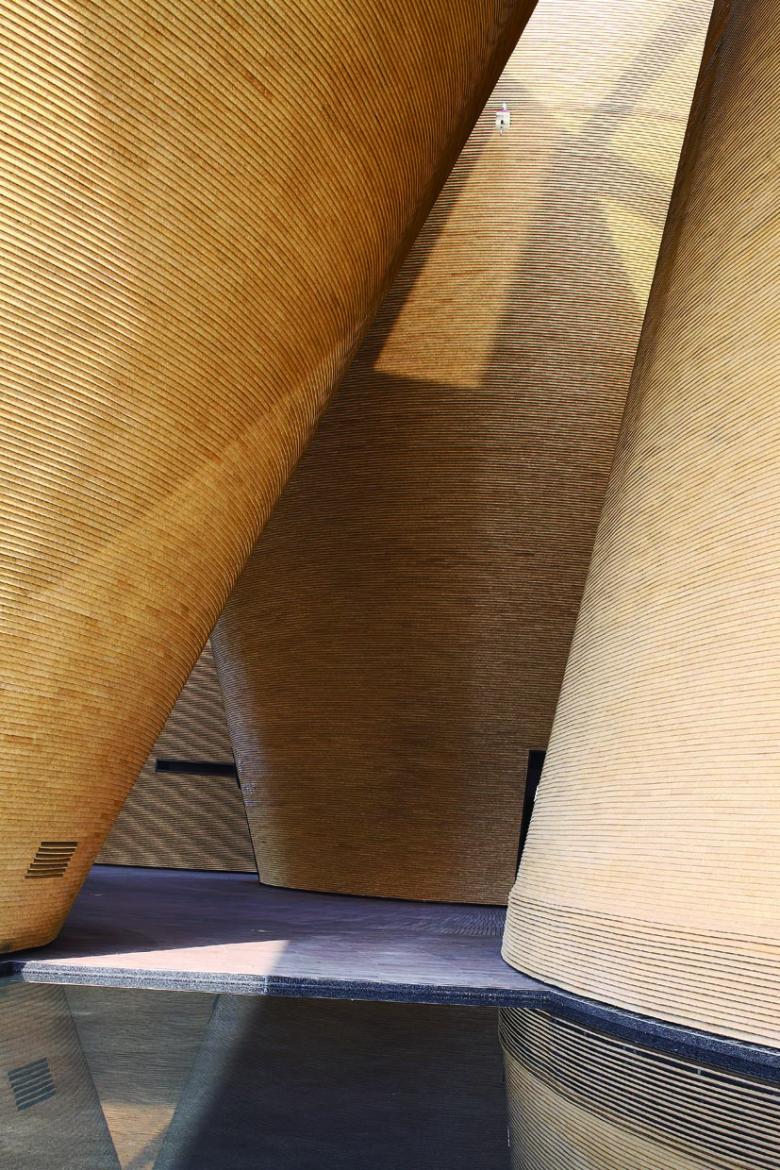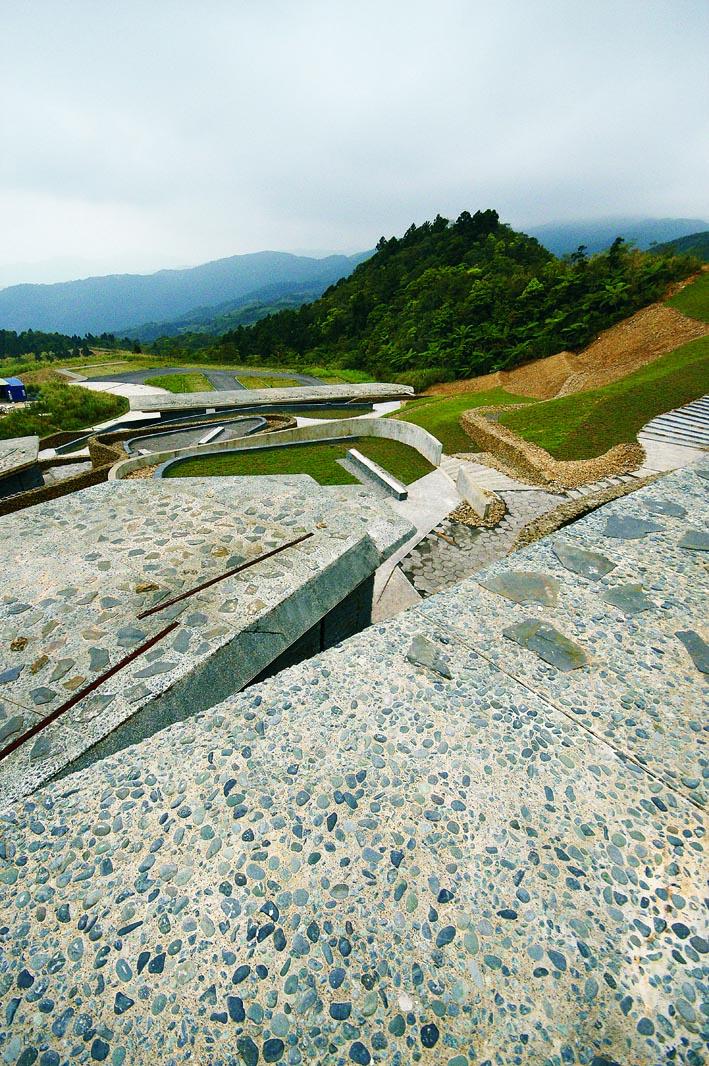The 2010 WA Chinese Architecture Awards
20. December 2010
The Beijing-based magazine World Architecture celebrated its 30th anniversary this autumn. Every second year the magazine organizes the WA Chinese Architecture Awards. The jury for the award in 2010 selected three prizes and five honorable mentions. Two school buildings in remote areas and a visitor centre in Tibet were the winners. The rather small projects and the social impact they have in their direct neighborhood point to aspects of quality beyond mere window-dressing in architecture.
Winning Prize: Bridge School, Xiashi Village, Fujian Province, China
Architects: Li Xiaodong, Qinghua University, Beijing
Winning Prize: Bridge School, Xiashi Village, Fujian Province, China
Architects: Li Xiaodong, Qinghua University, Beijing
The Bridge School at Xiashi Village in Fujian Province was, soon after it had been awarded with the WA prize, also awarded with the Aga Khan prize for architecture in 2010.
The team around architect Li Xiaodong from Qinghua University in Beijing merged the school building with the need for a bridge in the village just opposite an old circular Tulou building made of rammed earth. The structural connection across the creek combines the function of bridge, school, playground and stage for the villagers. With contemporary material like steel, concrete, glass and wood the architects do not compete with the traditional buildings, but rather communicate with the neighboring historical structures.
Winning Prize: New Bud Primary School, Xiasi, Sichuan Province
Architects: Zhu Jingxiang and Xia Heng
Winning Prize: New Bud Primary School, Xiasi, Sichuan Province
Architects: Zhu Jingxiang and Xia Heng
The second awarded school is located in Sichuan Province in the village of Xiasi. Here the earthquake of May 12, 2008 destroyed the former village school. The Hong Kong Charity Funds supported the project by architects Zhu Jingxiang and Xia Heng from Hong Kong for the New Bud Primary School. With principles of sustainability in the choice of materials, the use of energy, with a solar water heater and an eco-friendly toilet, the prefabricated building was constructed by volunteers, factory workers and local villagers within two weeks. The primary load bearing part is made of a steel frame which is strengthened by a prefabricated panel system. The two parts are bound together by mechanical fasteners to form a strong but light composite structure. Although the wall is only 16 centimetres thick, the system can resist high seismic forces.
Winning Prize: Niyang River Visitor Center, Tibet
Architects: standardarchitecture, Beijing in cooperation with Zhaoyang Studio
Winning Prize: Niyang River Visitor Center, Tibet
Architects: standardarchitecture, Beijing in cooperation with Zhaoyang Studio
The third prize-winning project is part of the Bramaputra Canyon tourist development at Niyang River in Tibet. The Niyang River Visitor Centre was developed by standardarchitecture in cooperation with Zhaoyang Studio. The small solid block combines ticket office, dressing room for rafting, and toilets. The geometric volume and spaces connect the building with its surroundings. The architects adopted local building techniques by using a load bearing stonewall and timber beams for the roof. For the roof they used a 15 centimetre thick layer of vernacular Aga clay for thermal insulation and waterproofing purposes. By using local technology and materials for a contemporary building, the architects avoided a confrontation with local people and led them to a modern interpretation of their heritage. The vibrant Tibetan colors used for the inner public space reflect in an abstract way contemporary Tibetan habitats beyond symbolism. The project also received a special mention at the Tschernichow Prize in Russia after it has been awarded the WA prize in Beijing.
Honorable Mention: Namchabawa Visitor Center, Yalungzangpu River, Tibet
Architects: standardarchitecture, Beijing
Furthermore, the jury awarded five projects with an honorable mention. A second project by standardarchitecture, the Namchabawa Visitor Centre at Yalungzangpu River in Tibet, within sight of 7.782-metre-high Mount Namchabawa, was praised. The 1.500 sqm building serves as visitor centre, including reception hall, public toilets, supply store, internet bar, medical centre, locker room for backpackers, meeting rooms, office for tour guides and drivers, water reservation tank and central electrical switch house for the village. As in the case of Niyang River Visitor Centre, the architects used local material in an abstract way and created a contemporary solution for the rural area.
Honorable Mention: Hutong Bubble 32, Beijing
Architects: MAD (Ma Yansong and Dang Qun)
The Hutong Bubble 32 by MAD (Ma Yansong and Dang Qun) introduces a new element into a traditional courtyard-house in Beijing. The bubble provides a toilet and a staircase that extends useable space to the roof. With this project a strong statement for a contemporary transformation of the poor standards of hygiene in the traditional courtyard areas was achieved.
Honorable Mention: Kindergarden, Jiading near Shanghai
Architects: Deshaus, Shanghai
The awarded Kindergarten by Deshaus is located in Jiading near Shanghai. Its spatial organisation and dynamic space create an interesting circulation within the skilful organisation of the building mass. With a sophisticated color concept, windows of different sizes, a “ramp-building” for access to the second floor and some “courtyards in the air”, the solid building appears as perforated block in the suburban surroundings.
Honorable Mention: Vanke Pavilion for Expo 2010, Shanghai
Architects: Duoxinang Studio
The Vanke Pavilion for Expo 2010 in Shanghai by Duoxiang Studio was awarded for its use of recycled materials, for handling environmental issues and details carefully, and for its innovative spatial organisation. The cone-shaped volumes are made of straw boards and are covered by a transparent membrane at the roof. The covered space between the seven cones was used as semi-public arena with natural ventilation underneath.
Honorable Mention: Memorial Arcade of Cherry Orchad Cemetery, Jiaosi, Taiwan
Architects: Sheng Yuan Huang and Field Office
The Memorial Arcade of Cherry Orchard Cemetery in Jiaosi in Taiwan by Sheng Yuan Huang and Field Office was awarded for its response to the geographical features of the site in terms of layout. Organically composed into the landscape, the columbarium was built with local materials and construction techniques.
When analyzing the prizes it is amazing that in a rapidly urbanizing country like China most of the projects are located in rural areas, but this shows that young architects today care about the rural development and try to bridge the gab between urban lifestyle and rural habitat. Two of the three prizes were awarded to rural schools, which shows that small signs for a better future are perceptible and hopefully will find followers not only in their local environment but also among architects.
Eduard Kögel
Winning Prizes
Bridge School, Xiashi Village, Fujian Province
Li Xiaodong
Beijing
New Bud Primary School, Xiasi, Sichuan Province
Zhu Jingxiang and Xia Heng
Hong Kong
Niyang River Visitor Center, Tibet
standardarchiteture
Beijing
Zhaoyang Studio
Honorable Mentions
Namchabawa Visitor Center, Yalungzanpu River, Tibet
standardarchiteture
Beijing
Hutong Bubble 32, Beijing
MAD (Ma Yansong and Dang Qun)
Beijing
Kindergarden, Jiading
Deshaus
Shanghai
Vanke Pavilion for Expo 2010, Shanghai
Duoxiang Studio
Memorial Arcade of Cherry Orchad Cemetery, Jiaosi, Taiwan
Sheng Yuan Huang and
Field Office
Jury
Qi Xin, Chief Architect of Qi Xin Architecture Design Office (Beijing)
Meng Yan, Partner of URBANUS (Shenzhen)
Liang Jingyu, Chief Architect of Approach Architecture Design Studio (Beijing)
Wu Guangting, Director of Taipei Art Museum (Taiwan)
Wang Weiren, Professor of Architecture School of Hongkong University (Hongkong)
Krzysztof Ingarden, Architect (Poland)
Wang Lu, Editor in Chief of World Architecture (Beijing)
Related articles
-
Spotlight on Italy
on 5/16/18
-
Bologna Shoah Memorial
on 7/20/15
